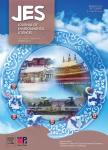Health risks associated with heavy metals in the drinking water of Swat,northern Pakistan
Health risks associated with heavy metals in the drinking water of Swat,northern Pakistan作者机构:Department of Environmental Sciences University of Peshawar State Key Laboratory of Urban and Regional Ecology Research Centre for Eco-environmental Sciences Chinese Academy of Sciences Nuclear Institute for Food and Agriculture
出 版 物:《Journal of Environmental Sciences》 (环境科学学报(英文版))
年 卷 期:2013年第25卷第10期
页 面:2003-2013页
核心收录:
学科分类:0830[工学-环境科学与工程(可授工学、理学、农学学位)] 1004[医学-公共卫生与预防医学(可授医学、理学学位)] 100402[医学-劳动卫生与环境卫生学] 10[医学]
主 题:daily intake drinking water health risk heavy metals multivariate analysis
摘 要:The concentrations of heavy metals such as Cd, Cr, Cu, Mn, Ni, Pb and Zn were investigated in drinking water sources (surface and groundwater) collected from Swat valley, Khyber Pakhtunkhwa, Pakistan. The potential health risks of heavy metals to the local population and their possible source apportionment were also studied. Heavy metal concentrations were analysed using atomic absorption spectrometer and compared with permissible limits set by Pakistan Environmental Protection Agency and World Health Organization. The concentrations of Cd, Cr, Ni and Pb were higher than their respective permissible limits, while Cu, Mn and Zn concentrations were observed within their respective limits. Health risk indicators such as chronic daily intake (CDI) and health risk index (HRI) were calculated for adults and children separately. CDIs and HRIs of heavy metals were found in the order of Cr 〉 Mn 〉 Ni 〉 Zn 〉 Cd 〉 Cu 〉 Pb and Cd 〉 Ni 〉 Mn 〉 Cr 〉 Cu 〉 Pb 〉 Zn, respectively. HRIs of selected heavy metals in the drinking water were less than 1, indicating no health risk to the local people. Multivariate and univariate statistical analyses showed that geologic and anthropogenic activities were the possible sources of water contamination with heavy metals in the study area.



